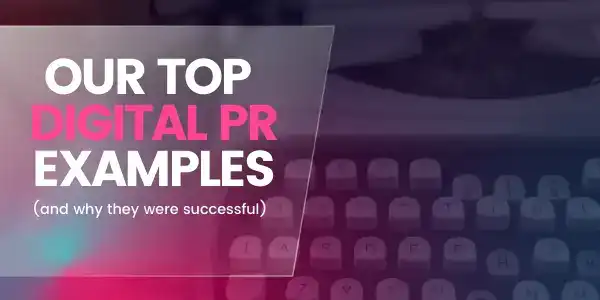
Digital PR Examples: 11 of Our Favourite Campaigns and Why They Worked
We love seeing a new digital PR story online (especially one of our own…!). But it can be hard for some business owners to truly understand what these campaigns are, how they are different from traditional PR, and what they can achieve, without seeing some Digital PR examples first. These case studies below are only a modicum of the work we do here at Reboot digital PR agency - for more of an insight to our work and the results it achieves, take a look at our press placements page.
We’ve listed 11 of our best examples of Digital PR campaigns below, but if there is one in particular you’d like to explore, you can jump to it here:
Examples of Digital PR - Our Top Picks:
1. Netflix and… CO2 Emissions
Our first example of an online PR campaign we loved was a recent one we conducted for an energy supplier information site.
It was an idea sparked from a simple statistic the team dug up, that streaming a video for 30 minutes resulted in CO2 emissions of about 0.2 kilograms (kg).
But how do you turn a stat into a good piece of digital PR? Well, the team got their calculators out and worked out how much CO2 was emitted per Netflix series, so we could crown the series that was “worst for the environment”, pair it with some data visualisation, and contextualise the stats by working out the equivalent number of miles you’d have to drive to rack up the same amount of CO2.
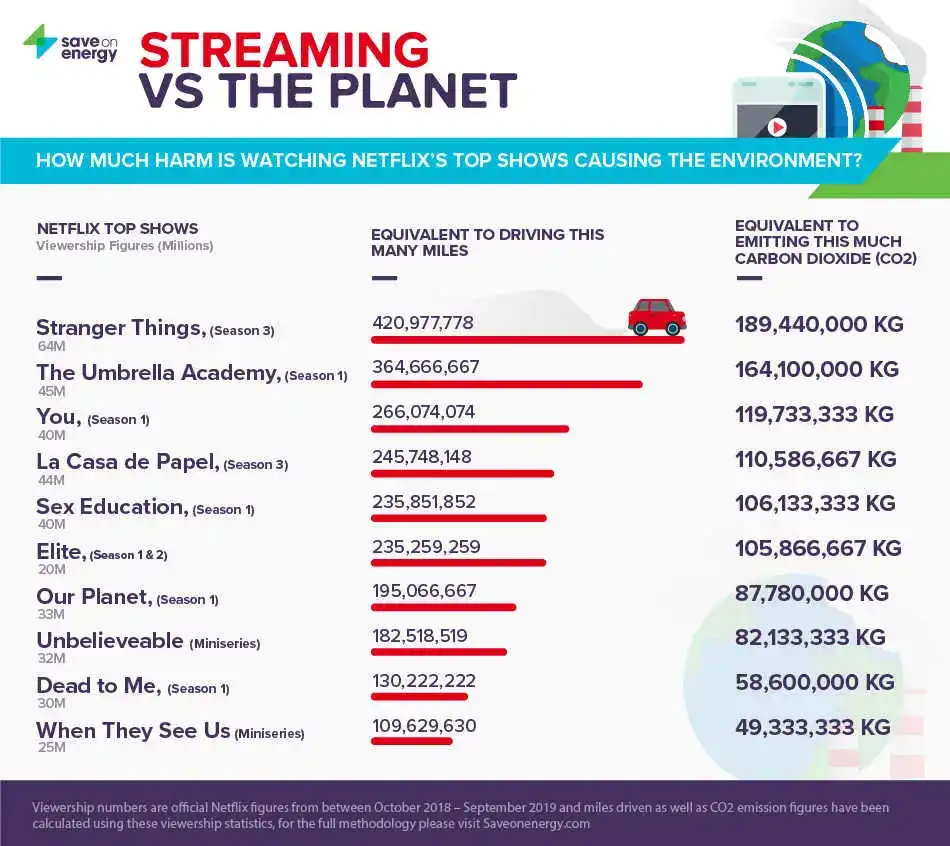
The best thing about this digital PR campaign example is that we did it for a client in a niche (energy) that can be hard to generate viral content for, or at least ideas that publications in all different areas will care about.
So why did it work? Not only did the campaign turn a statistic on energy into a relatable story - it played on a few factors:
- Current news: the UK was just heading into lockdown, and people were set to watch more Netflix than ever before. Originally, we broke the story before any quarantining measures, but a quick reactive change in the outreach email’s subject line helped us gain more interest. Originally the subject line was: Netflix and…CO2: The environmental impact of YOUR favourite shows. This was then changed in follow ups to: "Netflix and…COVID-19: The environmental impact of YOUR favourite shows"
- Used a big name: including a brand like Netflix in your story instantly makes it more attractive and juicy to a journalist.
- Emotional connection: Who doesn’t care about green living these days? It’s a hot topic which concerns us all. Especially as we sit there watching David Attenborough on Netflix.
In the end, we earned a whopping 85 links to the on-site content, including placements in Forbes, Quartz, MSN and The Daily Mail. Due to the use of Netflix, the campaign also had international appeal and appeared in media outlets in Germany, USA, France, Belgium, Poland and elsewhere.
2. Selfies and Shark Attacks

Image credit: Aleksey Boyko / Shutterstock.com
Another campaign of 2020 that we loved was also based on a small stat that we turned into a big story for a client. An important part of working in Digital PR is that you always have to keep your eyes peeled for something you can turn into a story. We found out that “we are 5 times more likely to die from a selfie than a shark attack - with an average of 43 people dying a year whilst taking a selfie” - Having a client in the mobile phone industry meant that we instantly knew this could become a big story for them.
We paired the shocking stat with a survey on selfie habits, having spoken to over 2,000 people we found out just how much the public are willing to risk for the perfect selfie.
So why did it work?
This example of Digital PR is the true definition of “going viral”. We believe it caught on because...Well… a story including sharks can only do well, right? *Steven Spielberg agrees*.

All jokes aside, you’re playing on an expectation the reader has, that shark attacks kill lots of people. When you are saying that, actually, an element of our modern lifestyle is actually killing way more (FIVE times more), then generally, people will be interested in that. What’s more, selfies are a hot topic in today’s world, and there had been a recent spate of deaths due to risky selfies on cliff edges and railway tracks - so the story was also relevant.
This digital PR story got over 80 placements for our client (including NY Post), and even made it onto TV; Fox News, CNN and even KITV News in Honolulu Hawaii all covered it! Not only was it highly published by the media- it also attracted the attention of others in our industry, and Reboot Online, a SEO company, was featured in The Weekly PR - A weekly curated publication full of the best digital PR examples.
“Reboot Online are killing it recently. Latest stats are 60 placements and counting for this simple idea that uses survey data. The idea combines trends with stats and is clearly very newsworthy, making it my campaign of the week!”
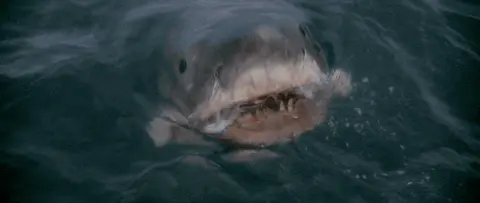
3. The cost of a taxi around the world
We were contacted by Taxi2Airport, a major airport transfer company, to help them create a digital PR story ahead of the busy summer period.
We decided to work out how much it costs for every 5km of driving in major cities across the world. It was as simple as that - once we had the numbers we could name and shame the most expensive countries in the WORLD for cab fares - right before we all left on our summer holidays.
So why did it work?
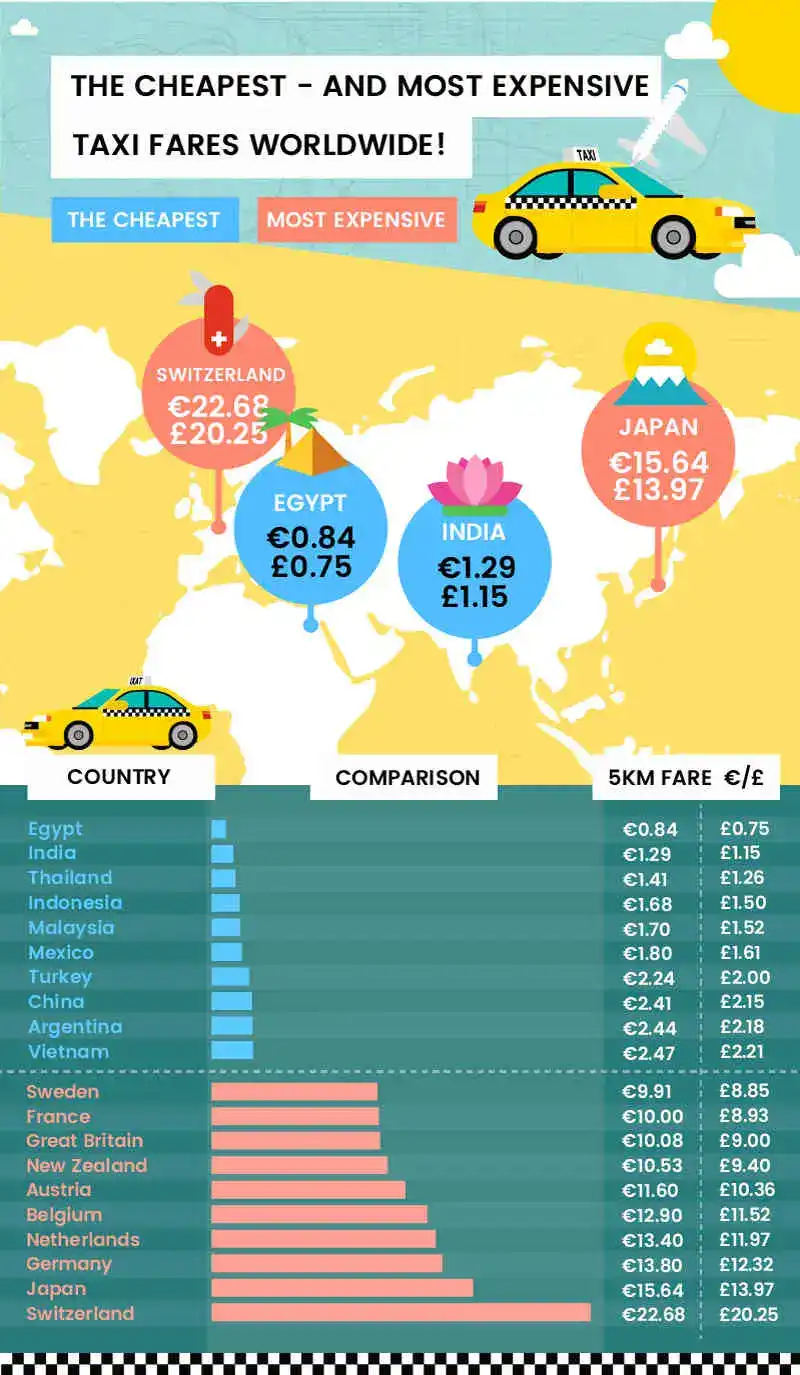 We picked this digital PR campaign example because it was the perfect recipe for a good story, it had things we all love: summer holidays, traveling and... moaning about how expensive things are.
We picked this digital PR campaign example because it was the perfect recipe for a good story, it had things we all love: summer holidays, traveling and... moaning about how expensive things are.
It also had international outreach potential, having examined 20 countries across the globe. What’s more, the UK were in the bottom ten - meaning we had some of the most expensive taxi fares in the world - creating an incredibly newsworthy story.
Not only that, but the campaign was supported by an exclusive quote from The Lonely Planet. A quote from a well known brand helped elevate the PR campaign, and offered the journalist everything they would need for their article.
All in all, we gained over 400 placements for our client, in major outlets across the world - which was really important for our client, as they are a global brand operating in all different countries.
We can also attribute some Google ranking success to this campaign, as after the peak of outreach, the client’s website saw a 55% increase in keywords ranking in top 3 positions on the search engine. You can read more on this case study here.
4. If the Royals had to Get Everyday Jobs…
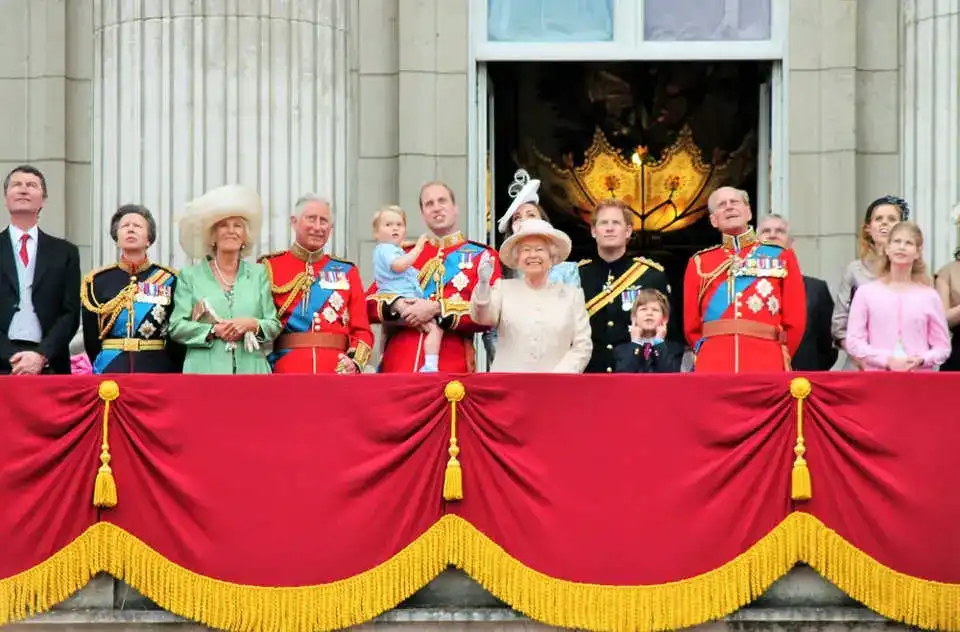
Image credit: Lorna Roberts / Shutterstock.com
Back in 2018, we did a digital PR story on what the Kardashians would earn if they had to get ‘real’ jobs. The story did really well, even getting traditional PR coverage on TV and radio. We thought why not reuse our tried and tested PR formula on a different topic - we felt the British royal family would be a great fit, plus they had been getting a LOT of coverage since the Harry and Meghan wedding.
We researched and created some mock CVs, assessing each royal family member’s own skills and professional experience, and then looked through job listings to see what they would be suitable for - and how much their CV would be worth on today’s job market.
So why did it work?
A story on celebrities, especially ones as famous as the royals, is always a good idea - which is why we have included this in our list of examples of online PR. If you can tap into something the public is polarised on, then you have a great chance of getting coverage - in this case, the debate is whether the royals have “real jobs” and are they actually worth the income they get. To pair with this, we had something else in our arsenal - primary data. If you are researching your campaign, and get your hands on some data that isn’t available anywhere else, then you are on your way to getting your story published.
Another factor in the success of this PR is that we didn’t give up on outreach. After our first wave of backlinks, we saw the perfect opportunity around a month or so later to send out the campaign again - Harry and Meghan announced they were leaving their roles as royals.
So what jobs could they do now? Enter - our campaign. We mixed up the campaign slightly, to focus more on Harry and Meghan, also adding how much they’d be worth on the Canadian job market VS the UK one (as they had announced their move was to Canada).
All in all, the campaign got around 50 placements across the globe, including IBTimes, Grazia, Vanity Fair and Royal Central!
5. The European Countries Most at Risk of Cyber Crime

Sometimes you get a client that only wants campaigns that align closely with their niche. Although this can make the brainstorming job of a PR a little harder, the results can be really beneficial to a client if the campaign is executed properly.
This was the case for one of our cybersecurity clients. The team at Reboot calculated which country is most likely to encounter cyber crimes by manipulating some existing secondary data to give it a fresh new angle.
So why did it work? An example of good digital PR is one that mixes nerdy data with a cool angle. This is especially true for clients in a technical niche - the nerdy data will help get the story covered by more than just tabloids.
This is important, because although getting your story covered by the Daily Mail or The Sun is a great achievement, such placements won't always include a link back to your site.
However, so-called ‘nerdy’ publications are less targeted by PRs and are perhaps more likely to link out. Creating a data-based digital PR campaign for our client worked for us for a few reasons:
-
Outlets that published tended to be from our client’s industry and therefore aligned with their target audience.
-
Coverage was extremely relevant for our client, which Google seems to value these days more than Page Rank.
The combination of the above means that the client will likely see a significant improvement in rankings and therefore a huge ROI - the perfect example of digital PR and it’s power.
This example accumulated over 80 pieces of coverage - including links from Mashable and Statista!
6. Unauthorised absences from schools across the UK are on the rise
Our client in an educational niche wanted to grab the attention of the national press, but many journalists in the educational sector only like to cover official data, and often won’t pick up anything survey-based.
Most official data from the Department of Education gets covered by journalists as soon as it is released, so the PR team had to think of a way they could get their hands on official data that no one else has.
One great way to get this sort of primary data is through Freedom of Information (or FOI) requests. It’s a lengthy process that can take over a month before you get responses, but if the data is juicy, then it’s worth it in the end. This is exactly what we did, the team submitted several FOI requests to all county councils (26), unitary authorities (55) and London boroughs (32), asking for the number of fixed penalty notices issued to parents in one school year for unauthorised absences.
So why did it work?
Because this sort of raw primary data is hard to get hold of, there is always a market for it, plus there is less competition from any other Digital PR agency, so you have an opportunity to earn some quality links that your competitors do not have - which can have a huge effect on your rankings.
? Tip: Make sure you act on your FOI data quickly. Most government bodies will publish their FOI requests on the website- and a journalist could well take the information from there without having to credit you!
This piece in particular got our client around 40 placements. This isn’t as high as some of our other viral campaigns, due to the more specialist subject of the research, but placements were from high quality, high DA publications like TES, and The Telegraph.
7. The most popular Disney classic in each european country
With the launch of Disney+, the team knew a reactive piece could get some great traction in the news.
We paired up with SEMRush to put together a search volume based piece, comparing the popularity on Google of different Disney classics (made before the year 2000), crowning the most popular film in each european country.
So why did it work?
An example of a good digital PR campaign is one that can elicit an emotion. In this case, a strong sense of nostalgia. This was the primary reason that the team decided to focus on Disney films from before 2000. Of course, the fact that we tied in that emotion with a super famous brand name that was in the news due to the launch of their channel also probably helped!
Another reason for the success of this PR example is the fact that the outreach was so wide - the story was relevant for a number of european countries, which means a great variation in the backlinks we got for our client.
We gained about 50 placements across Europe for this campaign, including Forbes, ELLE, Mental Floss, GQ Italia and Cosmopolitan France - oh la la!
8. Playing a sport will get you more matches on Tinder
A slightly older example of digital PR we have done is one for our golfing client about the sports that men and women find most attractive.
Sometimes, a good digital PR idea can come from internal office debates, which was the case for this one when we discussed whether rugby players or basketball players were hotter. Rather than leaving it there, the team decided to try out a little experiment, and outreach the results to the press.
So why did it work?
In the case of this digital PR example, it was a sexy, fresh idea that got people talking. It could be shared in different types of outlets - from men’s interest to lifestyle publications or fitness blogs.
What’s great about this campaign is that it has become a great template to use for different clients with all sorts of niches: “Can X get you more matches on Tinder?” is a great example of an adaptable PR campaign that demands placements.
We go over 50 placements for this campaign back in 2018, including in titles such as Men’s Health, Daily Star and India Times! But I think the real accomplishment was creating a sexy campaign for a golf client… ??♂️
9. Treating Hay Fever - household cleaning experts reveal all
So while this online PR campaign might not sound like it makes you want to scream “STOP THE PRESS!” it actually earned our cleaning client over 150 placements! This only goes to prove you don’t always need your press release to be all bells and whistles - sometimes some expert tips, delivered at an opportunistic time, can get some great coverage.
So why did it work?
Hayfever was reaching a peak, and with everyone stuck indoors due to Coronavirus, studies were showing how indoor dust was making your symptoms worse. Enter: our household cleaning client.
They let us know some top tips for ridding your home of dust, which we packaged up and reacted to the hayfever news. A very simple and quick campaign that shows the importance of newsjacking to help you smash those PR KPIs.
10. SECRET STAYCATIONS: UK Locations That Look Like They're Abroad!
With a lack of international travel on the cards for lockdown Britain, we knew we had to think outside of the box if we wanted to cover travel stories for clients.
In order to help guide Brits on some exotic-looking staycations that would spice up their Instagram feeds, the team set to work comparing the hashtags of different UK locations, and finding the spots that had sunny beaches and blue seas to help transport us abroad - even if we had to stay in the UK.

So why did it work?
It’s well known in the industry that ‘instagram-worthy’ campaigns are often a hit with journalists, who want to cater to their readers’ insatiable lust for social media content. (In fact there is much debate in the industry as to who started off the ‘Instagrammable’ PR template!)
We knew that looking at something ‘instagrammable’ would be an even bigger hit at a time where we could only explore the world through our phones (thanks Coronavirus!) With talks about permission to travel within the UK on the horizon, we thought we’d get ahead of the curve by offering journalists content for their soon-to-be travelling readership.
This online campaign earned 169 placements in total, including links from The Metro, Daily Mail, Mirror and lots more!
11. THESE are the best desserts - as voted by Brits
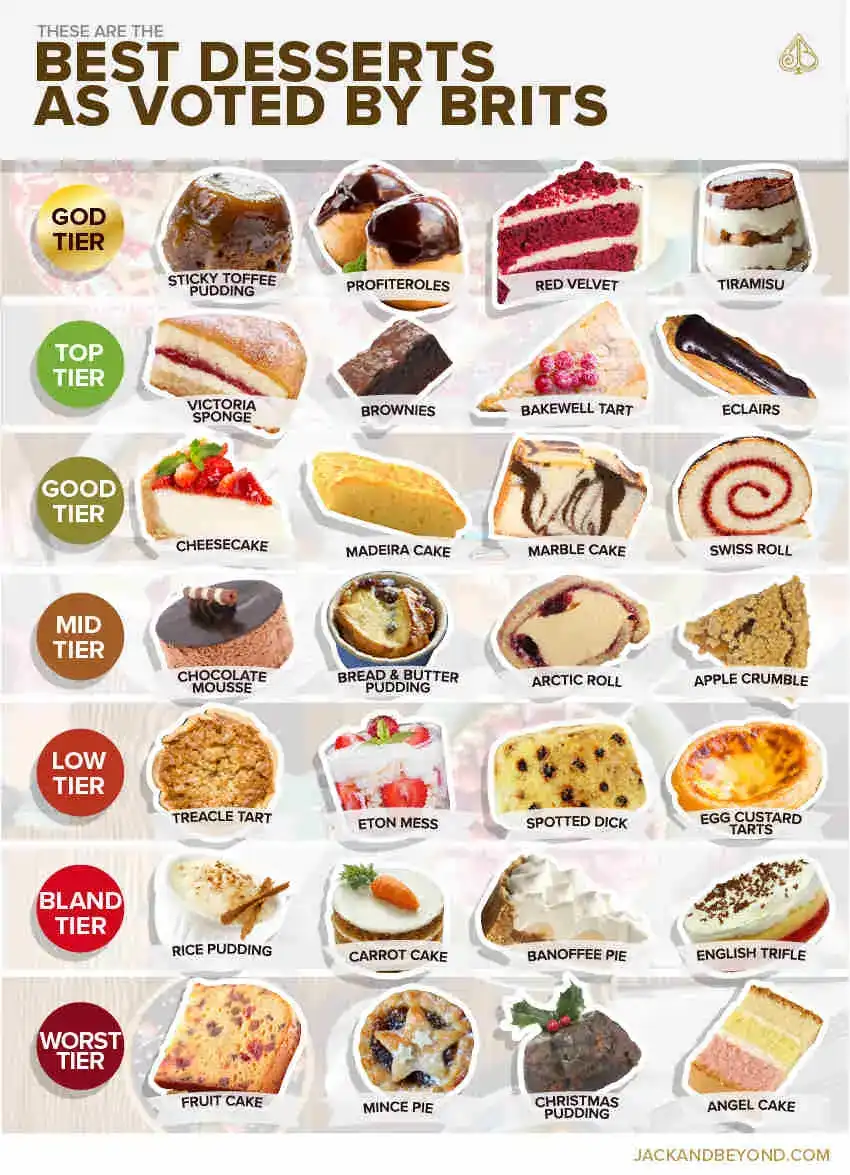 We were thrilled to have a bakery as a new client - finally an excuse to look online at some delicious desserts - like rice pudding.
We were thrilled to have a bakery as a new client - finally an excuse to look online at some delicious desserts - like rice pudding.
No, not a fan?
We thought we’d ask over 1,000 Brits to rank their favourite British desserts.
And then sit back and watch the world burn.
There is nothing like inciting the anger of thousands of Brits over their favourite puddings to land some controversial coverage for a client. We paired this simple survey with some top-tier graphics to really illustrate how awful carrot cake is (sorry not sorry).
So, why did it work?
Initially the pickup was slow on this piece. Maybe we’d angered too many sweet-toothed journalists with our rankings. So why are we using it as an example of online PR?
Well, we decided to go to the epicentre of opinionated web users: Reddit. From our talks with journalists, we know that more and more of them are using social media and platforms such as Reddit to catch onto trending news. After some inflammatory downvoting, and hundreds of comments on our ‘cake tier’ campaign, another journalist posted the campaign on Twitter.
Nearly 2,000 retweets later, and we landed coverage in over 200 outlets!
We spoke to our Digital PR exec, Andreea Putinelu, who worked on this project, for her opinion on what made it a success:
 “You don’t need any qualifications to say that you either love or hate profiteroles. It is the kind of subject everyone can get involved in, making it perfect for journalists and more likely to be published in a wide range of publications.
“You don’t need any qualifications to say that you either love or hate profiteroles. It is the kind of subject everyone can get involved in, making it perfect for journalists and more likely to be published in a wide range of publications.
Being such subjective research, it will easily spark conversation between people who either agree or vehemently disagree with it (it was especially fun reading those comments). It’s light-hearted and very likely to be shared around with your friends and loved ones to see who you need to cut out from your life and who can stay.
This kind of content can also be considered to be evergreen, and could be re-outreached whenever a good occasion arises, which is always a bonus!”
On top of that, our client noticed the real impact it had on their small London-based business:
“I would like to thank you for your hard work, we already saw some online sales increase. Online is the absolute crucial part of our small independent business.” - JackandBeyond.com
TL;DR: What can you learn from these Digital PR examples?
- Make sure you are reactive to current news – or predict the next big media trend
- If your campaign has a slow pickup rate – reangle it, or look at other ways to salvage a failing PR campaign
- Namedrop big brands or celebrities to ride off their popularity
- Play on expectations – Sometimes it’s best to invert expectations to get a juicy headline - but sometimes it’s good to reinforce them to make your story relatable
- Find something people love to complain about, or something with an element of tribalism
- Include a global angle to extend your outreach, or even do a US version by finding different stats or conducting a new survey for the demographic
- Try and get an exclusive quote from a big brand or organisation (charities can be good for this)
- Use primary data where you can if you’re after those high DA links
- Don’t ever give up on outreach! There will often come a time where your campaign can be relevant again with just some small tweaks
- Make it sexy! Juicy stories like this often have a fast pickup, just make sure they are still on-brand
- Explore different outreach methods – like social media or Reddit
It takes great skill, time and resources to launch a successful digital PR campaign. If you need some powerful links and coverage to drive business growth to get in touch or book a trial.
